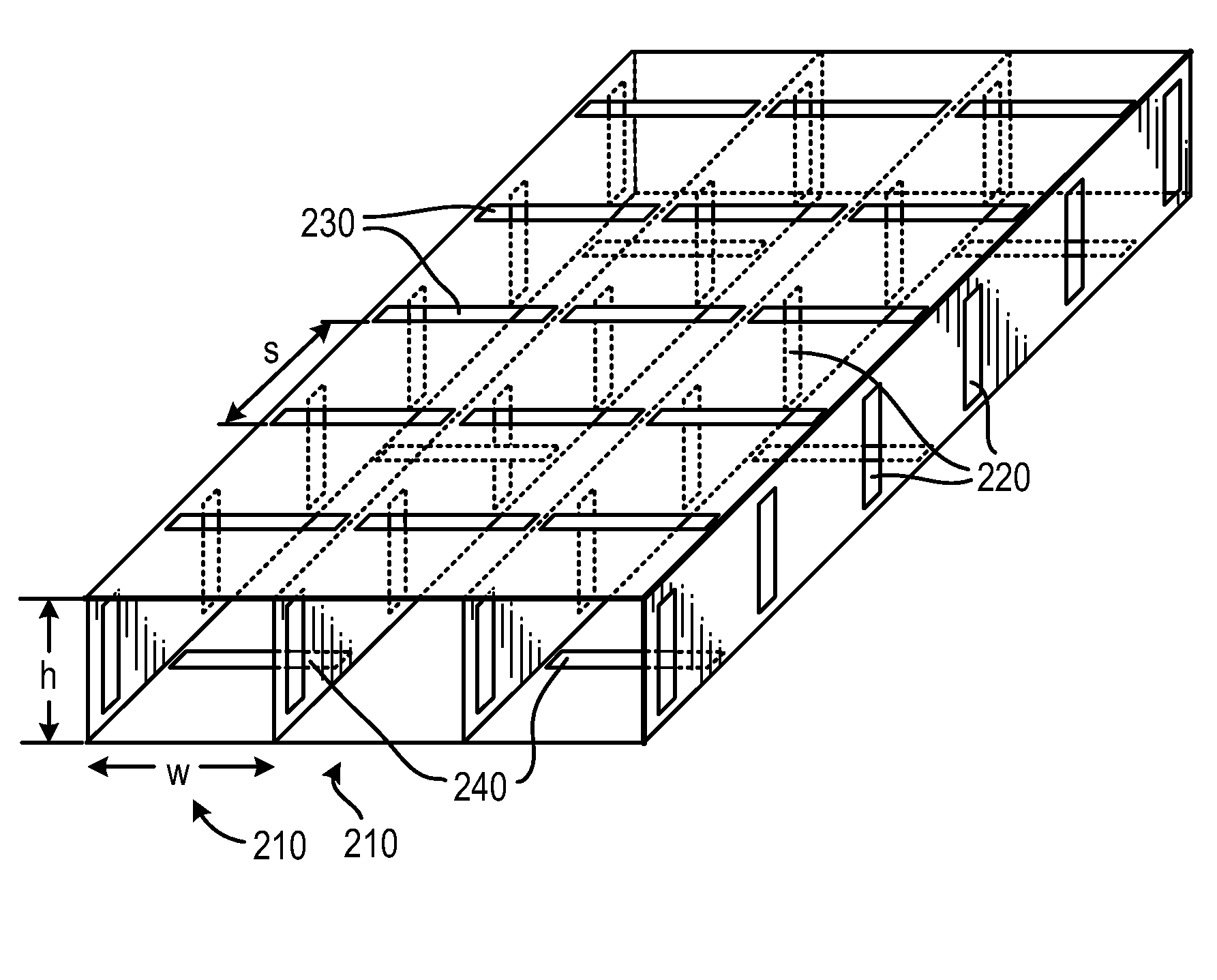Element Reduction In Phased Arrays With Cladding
a phased array and element reduction technology, applied in the field of phased arrays, can solve the problems of low control device cost, and low image reconstruction rate, and achieve the effect of improving image reconstruction rate, reducing image reconstruction rate, and reducing image quality
- Summary
- Abstract
- Description
- Claims
- Application Information
AI Technical Summary
Benefits of technology
Problems solved by technology
Method used
Image
Examples
Embodiment Construction
[0018]In phased-array systems, the commonly stated requirement for λ / 2 spacing between elements (where λ is the operating wavelength) arises from the desire to minimize sidelobes when scanning at angles up to π / 2 radians, or 90° from the scan center, which is a line normal to the plane of the array. Sparse arrays, where the element spacing is greater than λ / 2 create grating sidelobes for large scan angles. While post-processing approaches to reduce the ghosting introduced by these sidelobes exist the better ones are computationally expensive and scene dependent, making them impractical in dynamic environments such as security scanning.
[0019]In prototypical phased array applications such as the Distant Early Warning (DEW) radar system, or AEGIS AN / SPY-1 phased array radars, wide scan angles, up to 2 π steradians, are required. However, in many applications, a smaller solid angle scan field is sufficient. As an example, in security screening of individuals or objects, the scan solid a...
PUM
 Login to View More
Login to View More Abstract
Description
Claims
Application Information
 Login to View More
Login to View More - R&D
- Intellectual Property
- Life Sciences
- Materials
- Tech Scout
- Unparalleled Data Quality
- Higher Quality Content
- 60% Fewer Hallucinations
Browse by: Latest US Patents, China's latest patents, Technical Efficacy Thesaurus, Application Domain, Technology Topic, Popular Technical Reports.
© 2025 PatSnap. All rights reserved.Legal|Privacy policy|Modern Slavery Act Transparency Statement|Sitemap|About US| Contact US: help@patsnap.com



